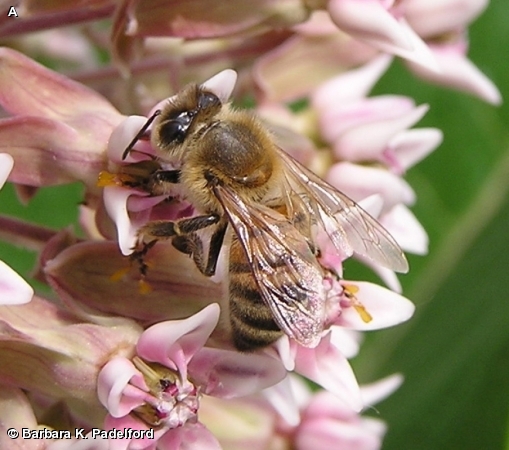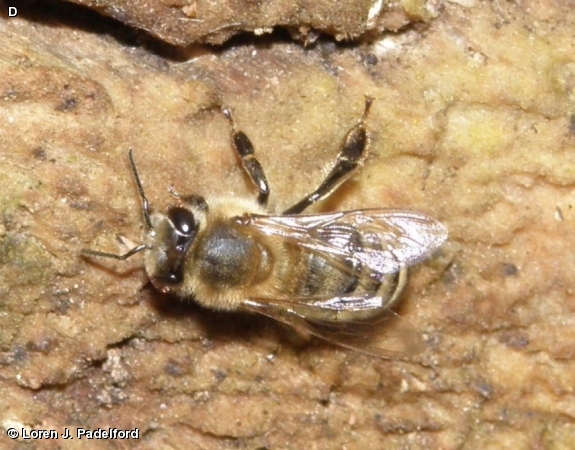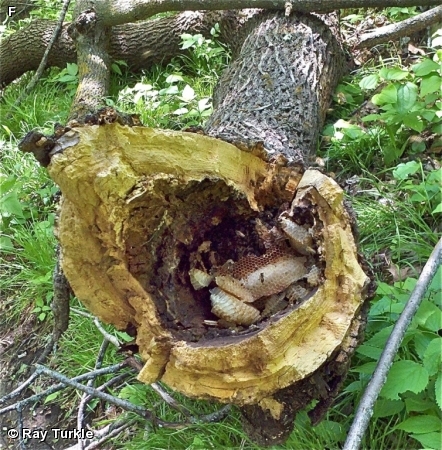
This Honey Bee is approximately 1/2 inch in length. The head is brown with tan-colored hair. The eyes of females are small and dark brown. The males have large brown eyes. The thorax is covered with thick, tan-colored hairs. The abdomen is banded black and tan. The wings are a clear tan color. The legs are black. Honey bees do not have a pollen basket (scopa) of long, dense hairs on their legs like many other bees. They and (bumble bees) have the hind tibia and first tarsal segment flattened into a “pollen basket” which is bare with a fringe of short hairs (Photos C & D).
Honey Bees are common in our area and can be seen from spring through fall. Worker bees have been seen in Fontenelle Forest on warm days in late November (Photos C and D). The workers heat and cool the hive with their wings, so any hive will have adults present all year. In cold weather they stay in the hives and live off their honey reserves.
All true Honey Bees are native to Europe. The first bees were introduced into North America by colonists in Jamestown in 1622. They are social insects with each colony having one queen and several hundred female workers. Males (drones) and queens are produced once a year. Only the female bee has a stinger. When a bee stings, her vital organs remain in the victim and the bee dies. This is one of the most economically important and most familiar insects.
The content of NatureSearch is provided by dedicated volunteer Naturalists of Fontenelle Forest who strive to provide the most accurate information available. Contributors of the images retain their copyrights. The point of contact for this page is: Loren Padelford.





